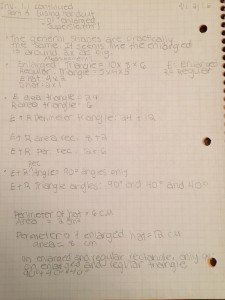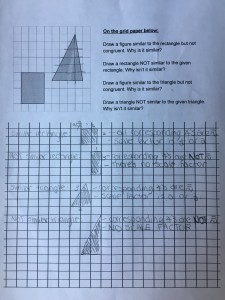Mathematical Similarity Summary
Figures are mathematically similar because their corresponding angles are congruent and they must share a scale factor. For triangles, if their corresponding angles are congruent, it means they automatically share a scale factor. This is because the angles decide the scale factor of a triangle. In order for corresponding angles to be congruent, it means that if two figures were to overlap, all of the angles would line up with each other. This means that for triangles, you only need to make sure their corresponding angles are congruent, because if their corresponding angles are congruent, they automatically share a scale factor. If triangles are the same type of triangle and share a scale factor, it means they are similar. In order for two figures to share a scale factor, you must be able to multiply all of the sides by one number in order to get the side lengths of the other shape. For example, a triangle with side lengths of 2 4 and 6 would be similar to a triangle with side lengths of 1 2 and 3 because you multiply 2 4 and 6 by .5 to get the side lengths of the other triangle.You can also use ratios. You can use ratios because if they share a cross ratio, it means they are similar. For rectangles it is very different. This is because every rectangle’s corresponding angles are congruent, because rectangles have four 90 degree angles, but not all rectangles are similar. This means that for rectangles, scale factor is very important. For rectangles, it is basically the opposite of triangles. If the rectangles share a scale factor, then they are similar.
Any two rectangles are similar:
False. Every rectangle’s corresponding angles are congruent, but there are many rectangles that don’t share a scale factor. This means that not every rectangle is similar.
Any two equilateral triangles are similar:
True. This is because every single equilateral triangle has all of the sides the same length. This also means that all of their corresponding angles are congruent. Since all of their sides are the same length, it means that every single equilateral triangle is similar.



